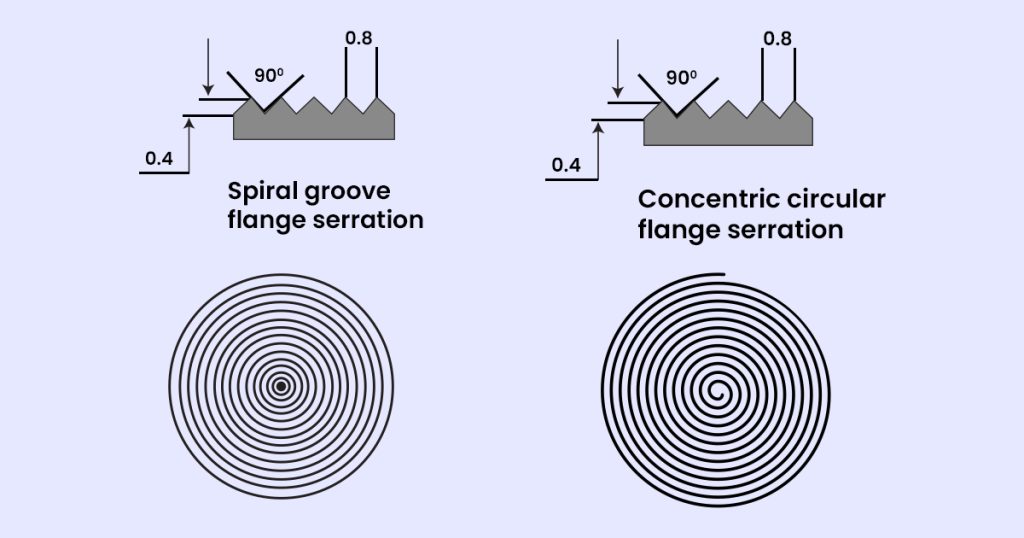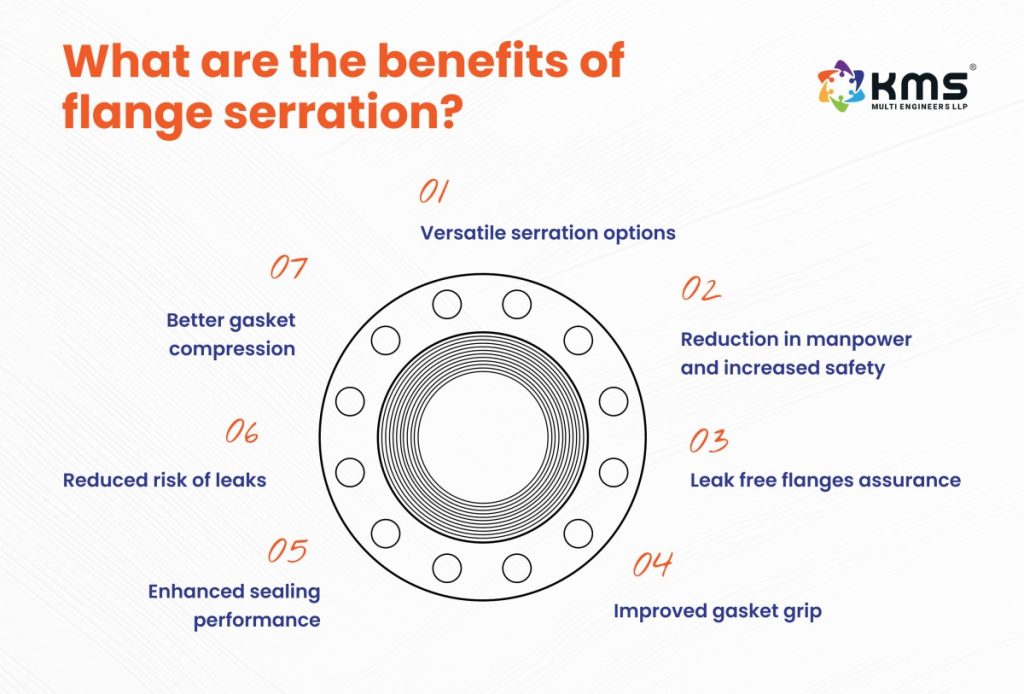Flanges are the most crucial part in the piping system of various industries. These flanges are used to connect the pipe end having different diameters together. But it is important to establish a durable, strong and reliable sealing in the system to avoid any sort of accidents. Flange serrations are typically used in industries to ensure the integrity of sealing. But what is the significance of flange serration in ensuring sealing integrity? What is flange serration? What is its application and benefits with flange connection in the piping system? You can get all of these answers here in the blog.
What is flange serration?
Flange serration means a particular pattern of grooves or ridge which are fitted onto the sealing face of the flange. The serration helps in creating a textured surface which ultimately improves the grip on the gasket. Thus, it plays an important role in enhancing the sealing performance with bolted flange connections. Concentric circles or spiral grooves are some of the common patterns observed in flange serration. The main purpose of implementing a flange serration is as follows:
It helps in increasing the friction across the flange and gasket. It helps the gasket to buckle up even under pressure.
Flange serration helps in improving sealing with the gasket for effectively deforming and establishing a tighter fit with better compression.
It helps in preventing the leaks in the system with sealing all small points where grooves meet up gaskets. Hence, it offers added resistance to fluid or gas leakage.
Types of flange serration

Flange serrations help in increasing the resistance when combined with a gasket reducing chances of leakage or dislocation in the system. There are two different type in flange serration classified based on pattern as follows:
Concentric circular flange serration
These are basically a type of circular serration which slowly increases in diameter. The design shows increment in diameter as moving from internal area to outer side. This serration is then cut into surface at 90 degree with cutting tool. It results in a V-shaped tip cut having a depth of 0.4mm.
Spiral groove flange serration
Spiral groove surface serration is also known as stock finish or stock serrated. Spiral flange serration also possesses a 90 degree groove. But the groove made here is much shallower because it is made with a round nose cutting tool. In recent times, stock finishes are widely opted due to its suitability in different areas and ease of manufacture etc.
The spiral groove flange serrations are not applicable in systems which deal with fluid of low viscosity or density. It is because in such cases, the risk of leakage is much higher.
What is the significance of flange serration in ensuring sealing integrity?
The significance of flange serration in ensuring sealing integrity which is as follows:
Improved gasket grip
Serrations help to provide a friction enhancing friction for better grip with gasket material. This design will prevent the slipping or displacement of the gasket at time of installation or under pressurized conditions. Therefore, flange serrations are very much vital to get a secured sealing.
Enhanced sealant retention
The groove helps for better retention and sealing of different compounds and lubricants on the gasket. All of these help in enhancing sealing performance and longevity of the system.
Even gasket compression
Serrated flanges help to evenly distribute the compression force along the surface of the gasket. This compression will ensure the filling of any deforms present on the surface of the gasket to reduce irregularities ultimately establishing a tighter seal.
Leak prevention
Flange serrations work to trap small amounts of fluid or gas which is possible with creation of multiple barriers to prevent leaks in the system. This setup is particularly applicable in high pressure and temperature conditions.
Customization for specific application
There are different types of serration patterns which allow the use of gaskets with various materials. Hence, it is possible to make an optimized seal for a particular operating condition as per demand of the application area.
What are the benefits of flange serration?

Flange serrations are used widely in industries to enhance the sealing of flange and gasket in piping systems. Check out these amazing benefits of using flange serration.
Versatile serration options
The versatility is observed in terms of ability to choose between use of automated or manual serration selected based on particular requirement.
Reduction in manpower and increased safety
Flange serration helps in reducing the requirements of manpower tagged with a safer environment for operating systems. Therefore, the risk associated with manual labor totally diminishes.
Leak free flanges assurance
Serrations are best when it comes to set up of leak free system. Thus, itt improves the efficiency and reduces the downtime of the system while contributing in reliability and proper functionality of the system.
Improved gasket grip
Serrations develop the textured surface for the gasket improving its contact and reducing the likelihood of slippage in the piping system.
Enhanced sealing performance
Serrated surfaces help to transfer the pressure from the gasket to a specific point. This process enhanced the effectiveness of sealing with flange. It is very much important in high temperature and pressure applications.
Reduced risk of leaks
It provides a consistent and tighter seal in the system minimizing risk of leaks. These are very much beneficial for the piping system which needs to handle liquid or gas under high pressure.
Better gasket compression
The different patterns present in serrated flanges aid in uniform compression of the gasket. It helps in maintaining the long lasting and secure type of sealing.
Conclusion
Flange serration plays a very significant role in enhancing the integrity of the sealing in the piping system. Basically, the flange serration works to develop a friction or textured surface for providing more surface for the gasket to attach. Also, it prevents the dislocation of the gasket applied in between the flange to minimize the probability of sealing from high pressure, temperature, vibrations and more. Different serration patterns are available in the market which are beneficial in different systems. Considering the benefits of flange serration, it is a durable, consistent and reliable option for increasing the integrity of sealing.
FAQs
What is the purpose of flange serration?
Flange serrations are used with the purpose to give more resistance when they are mated with a gasket. This will avoid the gasket to dislocate from its place lowering the risk of leakage in the system.
What is the main significance of using flange serration?
These are used to create a hydraulic fluid system which is completely free from any chances of leak.
How to check flange serration?
Flange serrations are measured in terms of visual and tactile. Here one needs to compare the feel of the machine face with that of surface finish.
What are the different types of flange serration?
There are mainly four types of the flange serration namely stock finish, spirally serrated, smooth finish, concentric serrated and more.
What is the depth of the flange serration?
The depth of the flange serration varies from 0.039 mm to 0.079 mm. It is because the groove is created with the help of a cutting tool which creates a V-shape.



